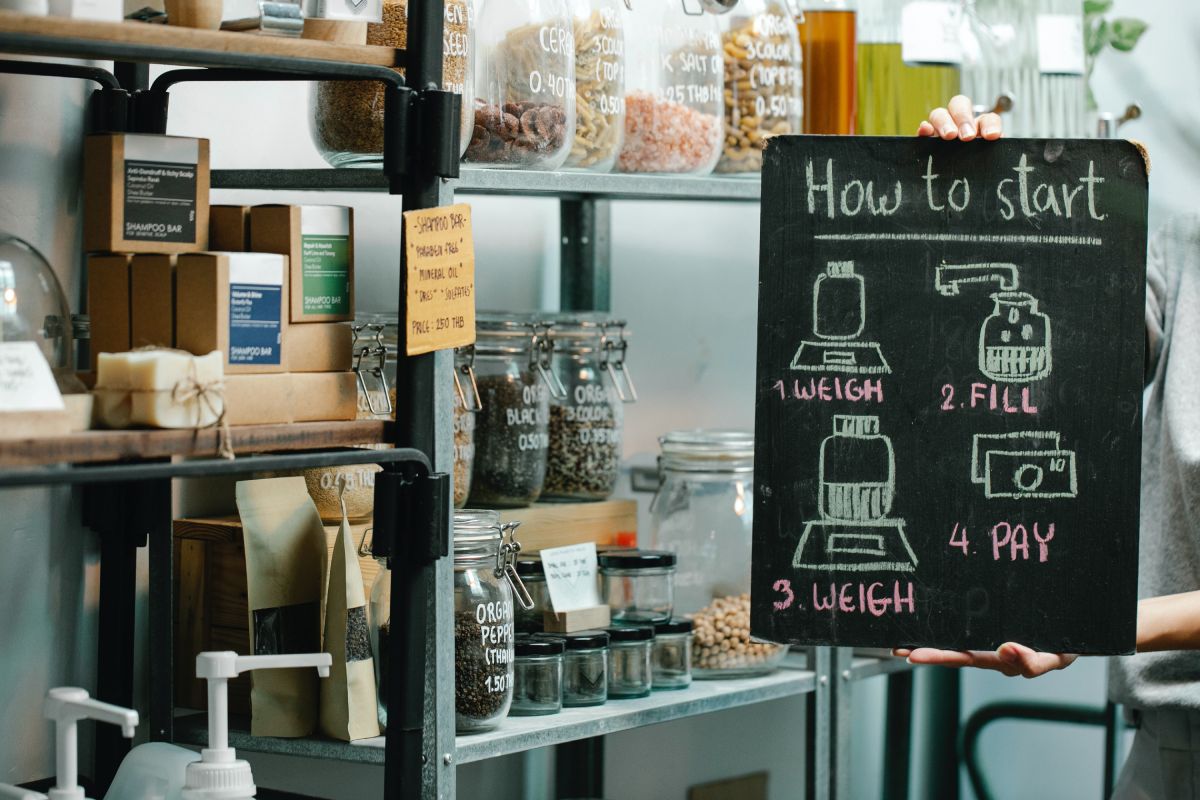Introduction
In today’s world, the excessive use of single-use plastics has become a pressing environmental concern. These plastics, which are designed for one-time use and then discarded, contribute to pollution, litter, and the degradation of our ecosystems. It is crucial for us to recognize the negative impact of single-use plastics and shift towards more sustainable alternatives in packaging.
Brief Overview of the Environmental Impact of Single-Use Plastics
Single-use plastics pose a significant threat to our environment. These items, such as plastic bags, straws, and food packaging, often end up in landfills, oceans, and other natural habitats. They take hundreds of years to decompose, releasing harmful chemicals into the environment during their breakdown process. The production and disposal of single-use plastics also contribute to greenhouse gas emissions, further exacerbating climate change. It is evident that our current reliance on single-use plastics is unsustainable and demands immediate action.
Importance of Transitioning to Eco-Friendly Packaging
Transitioning to eco-friendly packaging is of paramount importance for several reasons. Firstly, it helps mitigate the environmental impact of single-use plastics. By opting for sustainable alternatives, we reduce plastic waste, prevent pollution, and protect the delicate balance of our ecosystems. Secondly, eco-friendly packaging promotes resource conservation. Many eco-friendly materials, such as biodegradable plastics, plant-based fibers, and recycled paper, require fewer resources to produce and have a lower carbon footprint. This shift towards sustainable packaging aligns with the principles of a circular economy, where resources are utilized efficiently, and waste is minimized. Lastly, choosing eco-friendly packaging sends a strong message to businesses and industries. By demanding sustainable alternatives, we can encourage manufacturers to prioritize environmental stewardship, drive innovation in packaging solutions, and accelerate the adoption of eco-friendly practices across various sectors.
As we delve into the topic of eco-friendly packaging, we will explore the range of alternatives available, their benefits, and how they contribute to a more sustainable future. By making conscious choices as consumers and advocating for eco-friendly packaging, we can play a vital role in reducing plastic waste and creating a healthier planet for generations to come.
Understanding Single-Use Plastics
To fully grasp the significance of eco-friendly packaging alternatives, it is essential to understand the nature of single-use plastics and the detrimental impact they have on the environment.
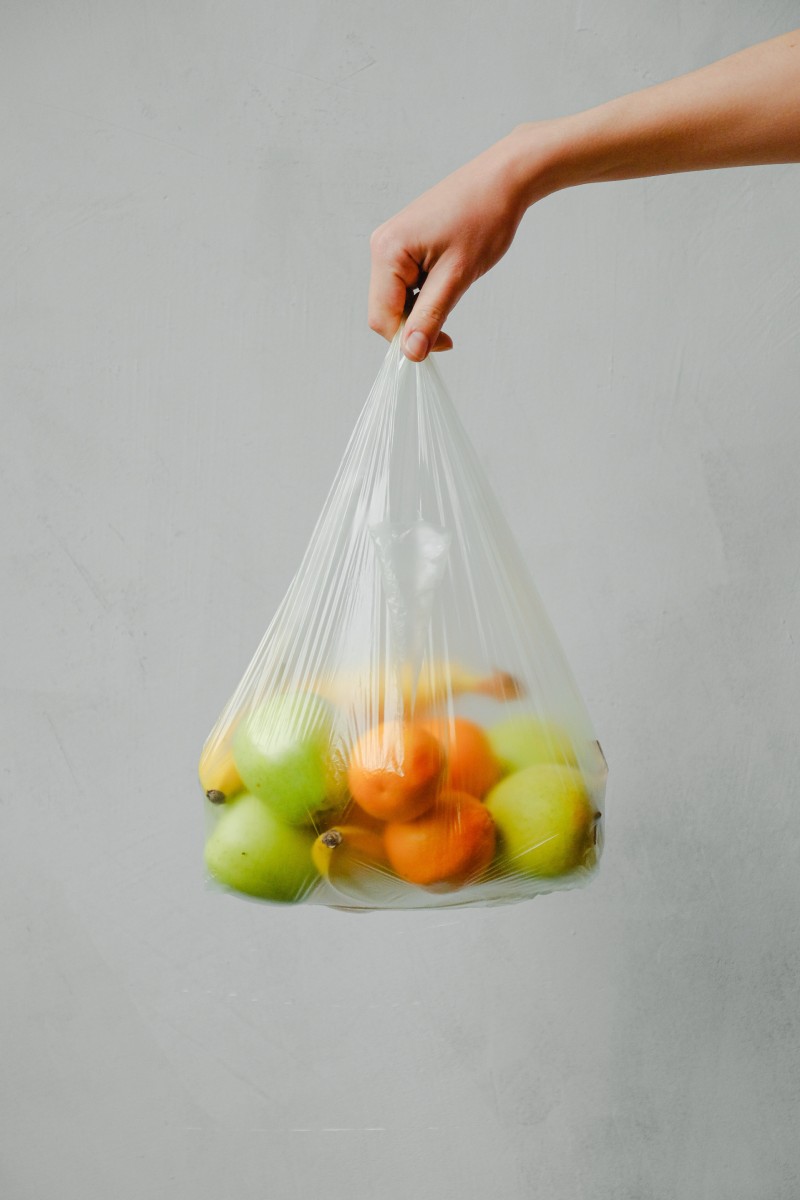
Definition and Examples of Single-Use Plastics
Single-use plastics are items that are designed to be used only once before being discarded. They are prevalent in our daily lives and can be found in various forms, including:
- Plastic Bags: Thin, lightweight bags commonly used for shopping and carrying goods.
- Plastic Straws: Small tubes used for drinking beverages, often made from non-biodegradable materials like polypropylene.
- Plastic Bottles: Containers for beverages, personal care products, and household cleaners that are typically disposed of after a single use.
- Disposable Cutlery: Plastic forks, spoons, and knives intended for one-time use and then thrown away.
- Food Packaging: Plastic wraps, trays, and containers used to package food products, especially in the fast-food and takeaway industry.
These examples represent just a fraction of the wide range of single-use plastics that have become deeply ingrained in our consumer culture.
Negative Consequences of Plastic Waste on the Environment
The prevalence of single-use plastics has led to severe environmental consequences. Here are some of the key negative impacts associated with plastic waste:
-
Pollution and Litter: Single-use plastics are a major contributor to pollution, particularly in our oceans, rivers, and natural landscapes. Improper disposal and inadequate recycling infrastructure result in plastic waste ending up in these delicate ecosystems, harming marine life and wildlife.
-
Persistent Presence: Unlike natural materials, plastics do not readily biodegrade. They break down into smaller pieces known as microplastics, which can persist in the environment for hundreds of years. These microplastics can be ingested by animals, potentially entering the food chain and posing risks to human health.
-
Habitat Destruction: The production and extraction of raw materials for single-use plastics contribute to habitat destruction and deforestation. The extraction of fossil fuels, primarily used in plastic production, leads to ecological damage and loss of biodiversity.
-
Greenhouse Gas Emissions: The lifecycle of single-use plastics, from production to disposal, generates significant greenhouse gas emissions. These emissions contribute to climate change, a global environmental crisis with far-reaching consequences.
By comprehending the detrimental effects of single-use plastics on the environment, we can recognize the urgent need for eco-friendly packaging alternatives. The subsequent sections will delve into the various sustainable options available, highlighting their benefits and potential to drive positive change in our approach to packaging.
The Need for Eco-Friendly Packaging
As the detrimental environmental impact of traditional packaging becomes increasingly evident, the urgency to transition to eco-friendly alternatives becomes paramount. This section explores the environmental concerns associated with conventional packaging and highlights the significant benefits of adopting sustainable packaging solutions.

Environmental Concerns Associated with Traditional Packaging
Traditional packaging, often reliant on single-use plastics, presents several environmental challenges that necessitate a shift towards more sustainable options:
-
Plastic Pollution: The excessive use of single-use plastics has contributed to a global plastic pollution crisis. Plastic waste, especially non-biodegradable varieties, accumulates in landfills, rivers, and oceans, posing severe threats to ecosystems and wildlife.
-
Resource Depletion: The production of conventional packaging materials, such as plastic and paper, relies heavily on the extraction of finite resources like fossil fuels and trees. This extraction depletes natural resources and contributes to habitat destruction and climate change.
-
Energy Consumption: The manufacturing and transportation of traditional packaging materials consume substantial amounts of energy, often derived from non-renewable sources. This energy-intensive process contributes to greenhouse gas emissions and exacerbates climate change.
-
Waste Generation: The linear “take-make-dispose” model of traditional packaging leads to significant waste generation. Most single-use packaging items are discarded after a single use, filling up landfills and incinerators, or ending up as litter in the environment.
Benefits of Adopting Sustainable Packaging Solutions
Transitioning to eco-friendly packaging offers numerous benefits that go beyond mitigating environmental concerns:
-
Reduced Environmental Impact: Eco-friendly packaging solutions, such as biodegradable materials and renewable alternatives, significantly minimize pollution, resource depletion, and waste generation. They offer a more sustainable approach to packaging that aligns with circular economy principles.
-
Conservation of Resources: Sustainable packaging options often utilize recycled materials, reducing the demand for virgin resources. By promoting recycling and the use of renewable materials, we can conserve valuable natural resources and minimize environmental degradation.
-
Energy Efficiency: Many eco-friendly packaging solutions require less energy to produce compared to traditional materials. Using renewable energy sources for production further reduces the carbon footprint associated with packaging.
-
Enhanced Brand Reputation: Embracing sustainable packaging demonstrates a commitment to environmental stewardship and resonates with eco-conscious consumers. It can strengthen brand reputation, attract environmentally conscious customers, and differentiate businesses in a competitive market.
-
Innovation and Creativity: The shift towards sustainable packaging encourages innovation in materials, design, and manufacturing processes. This fosters creativity in finding new solutions that are both eco-friendly and aesthetically appealing.
By recognizing the environmental concerns associated with traditional packaging and embracing sustainable alternatives, we can pave the way for a future where packaging plays a vital role in environmental preservation. The subsequent sections will explore various eco-friendly packaging options and provide practical insights on adopting them.
Sustainable Packaging Materials
As the demand for eco-friendly packaging grows, various sustainable materials have emerged as alternatives to single-use plastics. This section provides an overview of biodegradable materials, recyclable and reusable options, as well as innovative materials that are revolutionizing the packaging industry.

Biodegradable Materials
Biodegradable materials offer a promising solution to the environmental issues caused by conventional packaging. These materials are designed to break down naturally and return to the environment without causing harm. Some common biodegradable packaging options include:
-
Bioplastics: Bioplastics are derived from renewable resources such as cornstarch, sugarcane, or cellulose. They can mimic the properties of traditional plastics but have the advantage of being biodegradable under certain conditions.
-
Compostable Materials: Compostable packaging materials are specifically designed to break down in composting systems. They are made from organic materials like plant fibers, paper, or food waste, and can be turned into nutrient-rich compost to support plant growth.
Recyclable and Reusable Packaging Options
Recyclable and reusable packaging options focus on extending the life cycle of materials and reducing waste. These alternatives promote the responsible use of resources and offer opportunities for a more circular economy:
-
Recyclable Packaging: Many materials, including paper, cardboard, glass, aluminum, and certain types of plastic, can be recycled into new products. Recycling reduces the demand for virgin materials and decreases the amount of waste sent to landfills.
-
Reusable Packaging: Reusable packaging involves using containers or packaging that can be cleaned and reused multiple times. This approach encourages a shift away from single-use items and promotes a more sustainable consumption pattern.
Innovative Materials and Their Applications
Innovation in packaging materials has led to the development of groundbreaking alternatives that utilize natural and renewable resources. Some notable examples include:
-
Mushroom Packaging: Mushroom packaging, also known as mycelium packaging, is made from the root structure of mushrooms. It is biodegradable, compostable, and can be molded into various shapes and sizes. This material offers an eco-friendly option for protective packaging and insulation.
-
Seaweed-Based Packaging: Seaweed-based packaging utilizes the natural properties of seaweed, a renewable resource abundant in oceans. It offers a biodegradable and compostable alternative to plastic packaging, with the added benefit of being a carbon sink during its growth.
These innovative materials and their applications demonstrate the potential for sustainable packaging solutions that prioritize environmental responsibility without compromising functionality or durability.
By embracing sustainable packaging materials, businesses and consumers alike can contribute to the reduction of plastic waste and the preservation of natural resources. In the following sections, we will explore the implementation and benefits of these alternatives in more detail.
Plastic-Free Packaging Solutions
As the world seeks alternatives to single-use plastics, plastic-free packaging solutions are gaining popularity for their environmentally friendly characteristics. In this section, we will explore three key alternatives: paper and cardboard, glass and metal containers, and plant-based packaging materials.

Paper and Cardboard Alternatives
Paper and cardboard offer versatile and widely accessible options for plastic-free packaging. These materials have been used for packaging purposes for centuries and continue to be viable alternatives today. Here are some advantages of paper and cardboard packaging:
-
Sustainability: Paper and cardboard are derived from renewable resources, such as trees, and can be produced using responsible forestry practices. They are biodegradable and can be recycled, reducing the environmental impact.
-
Versatility: Paper and cardboard can be easily molded, cut, and folded into various shapes and sizes, making them suitable for a wide range of products. They can be used for boxes, bags, sleeves, and labels, providing customizable packaging solutions.
-
Branding Opportunities: Paper and cardboard packaging offer ample space for branding and creative designs. Logos, product information, and graphics can be printed directly on the packaging, allowing businesses to convey their message effectively.
Glass and Metal Containers
Glass and metal containers provide durable and reusable alternatives to single-use plastic packaging. They offer several advantages that make them attractive options for environmentally conscious consumers:
-
Durability: Glass and metal containers are known for their durability and ability to protect products from external factors. They can be reused multiple times, reducing the need for disposable packaging.
-
Recyclability: Glass and metal are highly recyclable materials that can be indefinitely recycled without losing their properties. Recycling these materials helps conserve energy and reduce waste.
-
Product Preservation: Glass containers, in particular, are non-reactive and do not leach harmful chemicals into the contents, ensuring the integrity and safety of the products. They are suitable for a wide range of items, including food, beverages, and personal care products.
Plant-Based Packaging Materials
Plant-based packaging materials are derived from renewable resources, such as cornstarch, sugarcane, or plant fibers. These materials offer an eco-friendly alternative to plastic and are gaining popularity for their sustainability and biodegradability. Here are some notable plant-based packaging options:
-
PLA (Polylactic Acid): PLA is a bioplastic made from fermented plant sugars, usually derived from corn or sugarcane. It is compostable and can break down into natural components under the right conditions.
-
Bagasse: Bagasse is a fibrous byproduct of sugarcane processing. It can be molded into packaging products like plates, bowls, and containers. Bagasse packaging is biodegradable and offers a sustainable solution for food service and takeaway items.
-
Hemp Fiber: Hemp fiber is a versatile and renewable material that can be used for packaging applications. It is biodegradable, lightweight, and has excellent strength properties, making it suitable for various industries.
These plastic-free packaging solutions provide viable alternatives to single-use plastics, reducing waste and promoting a more sustainable future. By choosing paper and cardboard, glass and metal containers, or plant-based materials, businesses and consumers can contribute to the reduction of plastic pollution and support the transition to eco-friendly packaging practices.
Innovative Packaging Designs
As the demand for eco-friendly packaging grows, innovative designs are emerging to address the challenges of single-use plastics. In this section, we will explore three exciting trends: minimalist packaging concepts, package-free and bulk shopping models, and smart packaging technologies.
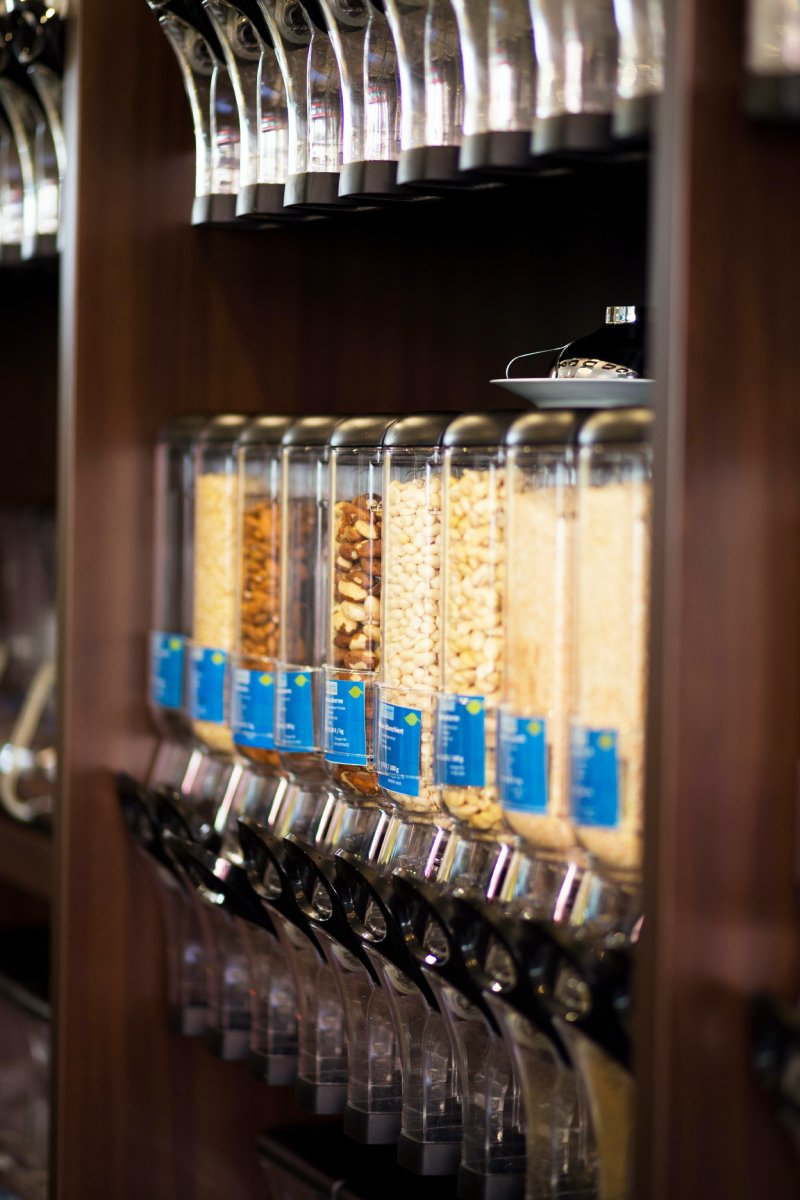
Minimalist Packaging Concepts
Minimalist packaging aims to reduce waste by stripping away unnecessary layers and focusing on essential elements. It promotes simplicity, functionality, and eco-consciousness. Here are some key features of minimalist packaging concepts:
-
Simplicity: Minimalist packaging embraces clean lines, simple graphics, and a clutter-free design. It eliminates excessive packaging materials and focuses on the core purpose of packaging: protecting the product.
-
Resource Efficiency: By using fewer materials, minimalist packaging reduces resource consumption during production and minimizes waste generation. It often employs lightweight materials, such as recycled paper or thin cardboard, to achieve sustainability goals.
-
Informative Design: While minimalist packaging may appear understated, it can still convey essential information about the product. Thoughtful typography, symbols, or color coding can communicate key details, ingredients, or usage instructions.
Package-Free and Bulk Shopping Models
Package-free and bulk shopping models offer an alternative to traditional pre-packaged goods. These models encourage customers to bring their own containers and refill them with the desired quantity of products. Here are the benefits of package-free and bulk shopping:
-
Waste Reduction: By eliminating unnecessary packaging, package-free and bulk shopping significantly reduce waste generation. Customers have the flexibility to choose the exact amount they need, reducing the likelihood of food or product waste.
-
Customization and Flexibility: Package-free shopping allows consumers to customize their purchases according to their preferences and needs. It empowers them to try new products or experiment with different quantities without committing to large packages.
-
Sustainable Sourcing: Package-free stores often prioritize sourcing products from local suppliers and sustainable producers. This emphasis on local and ethical sourcing reduces carbon emissions associated with transportation and supports environmentally friendly practices.
Smart Packaging Technologies
Smart packaging technologies leverage innovation to enhance product freshness, traceability, and sustainability. These technologies incorporate elements such as sensors, indicators, or intelligent materials to improve packaging functionality. Here are some examples of smart packaging technologies:
-
Time-Temperature Indicators: These indicators provide real-time information about the temperature exposure of a product during storage and transportation. They help ensure the quality and safety of perishable items and reduce food waste.
-
Active Packaging: Active packaging refers to packaging materials that interact with the product to extend shelf life or improve preservation. For example, oxygen scavengers can remove oxygen from food packages, reducing the risk of spoilage.
-
Intelligent Tracking: Smart packaging can incorporate tracking technologies, such as RFID (Radio Frequency Identification) tags or QR codes, to enable traceability throughout the supply chain. This enhances transparency, improves product recalls, and supports sustainable sourcing.
Innovative packaging designs are revolutionizing the way products are packaged, delivered, and consumed. From minimalist concepts to package-free models and smart technologies, these innovations contribute to the reduction of single-use plastics and promote a more sustainable packaging ecosystem.
Sustainable Packaging in Action: Industry Examples
As the demand for eco-friendly packaging continues to rise, numerous companies across various industries have embraced sustainable packaging solutions. In this section, we will explore some success stories of companies that have implemented eco-friendly packaging and examine the impact on consumer perception and brand reputation.
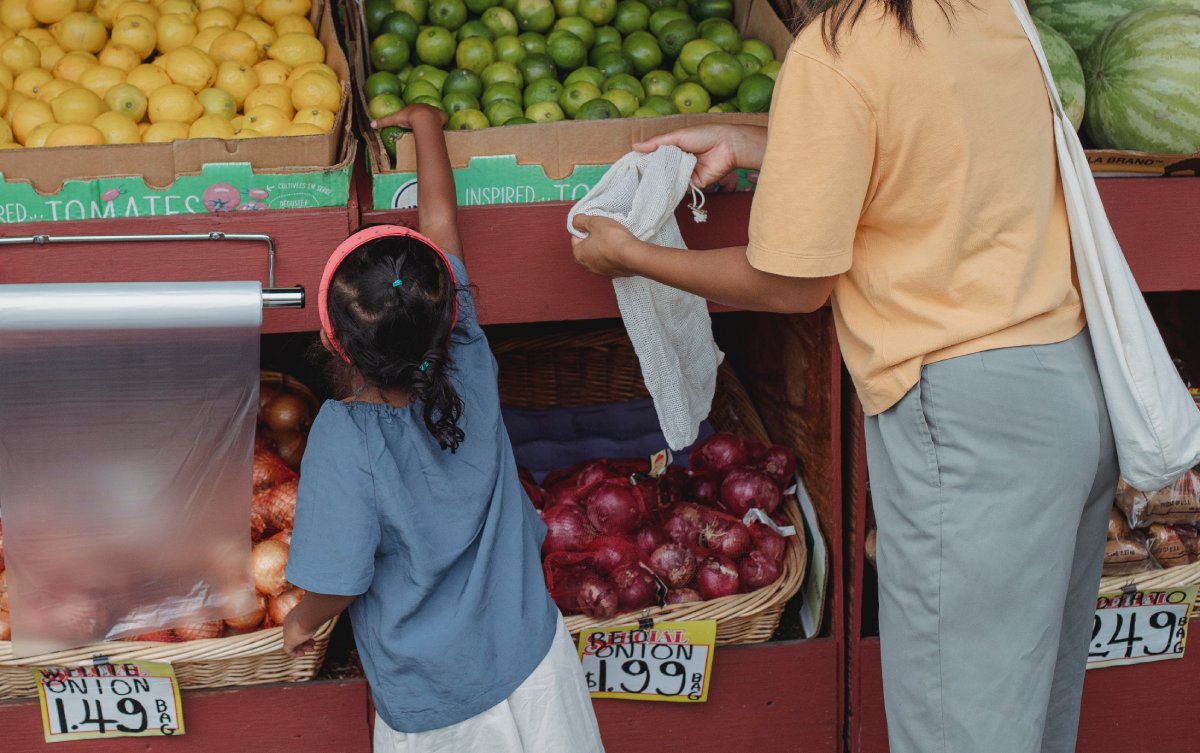
Success Stories of Companies Implementing Eco-Friendly Packaging
-
Procter & Gamble (P&G): P&G has made significant strides in sustainable packaging by focusing on recyclability and reducing plastic waste. They introduced the “Fairy Ocean Plastic” bottle, made from 100% recycled plastic, including beach plastic collected by volunteers. This initiative not only reduced the company’s reliance on virgin plastic but also raised awareness about ocean pollution.
-
Loop: Loop is an innovative shopping platform that partners with leading consumer goods companies to offer products in reusable packaging. Customers can order products online, and they are delivered in durable, refillable containers. After use, the containers are collected, cleaned, and refilled, creating a circular system that minimizes waste.
-
Lush: Lush, a cosmetic company, is known for its commitment to sustainability. They have developed packaging alternatives, such as using solid products instead of liquids to reduce the need for plastic bottles. Additionally, they offer in-store recycling programs where customers can return product containers for proper recycling or receive discounts on their next purchase.
-
Patagonia: Patagonia, an outdoor clothing company, has long been a leader in sustainability. They actively promote product durability and repairability to minimize waste. Patagonia also utilizes recycled and recyclable materials in their packaging, emphasizing the importance of reducing environmental impact throughout the product lifecycle.
Impact on Consumer Perception and Brand Reputation
Implementing eco-friendly packaging can have a significant impact on consumer perception and brand reputation. Here are some key benefits companies experience:
-
Positive Brand Image: Embracing sustainable packaging demonstrates a company’s commitment to environmental stewardship. Consumers appreciate and value brands that actively work towards reducing their ecological footprint. It enhances their perception of the brand as responsible and trustworthy.
-
Increased Customer Loyalty: Eco-friendly packaging initiatives can strengthen customer loyalty. When consumers align their values with a brand’s sustainability efforts, they are more likely to remain loyal and continue purchasing its products. Sustainable packaging serves as a visible reminder of the brand’s dedication to preserving the environment.
-
Differentiation in the Market: As more consumers prioritize sustainability, companies that adopt eco-friendly packaging gain a competitive edge. It sets them apart from competitors and positions them as leaders in sustainability practices. This differentiation can attract new customers who prioritize environmentally conscious choices.
-
Engagement and Advocacy: Sustainable packaging initiatives often generate positive conversations and engagement on social media platforms. Customers appreciate companies that take active steps to reduce plastic waste and protect the environment. Satisfied consumers may become advocates, spreading the word about the brand’s eco-friendly practices.
By implementing eco-friendly packaging, companies not only contribute to the reduction of single-use plastics but also enhance their brand reputation, build customer loyalty, and foster a positive image among consumers.
Consumer Awareness and Behavior Change
In order to drive the adoption of eco-friendly packaging, it is crucial to educate consumers about its benefits and encourage responsible purchasing choices. This section will delve into the importance of consumer awareness and behavior change in the transition towards sustainable packaging solutions.
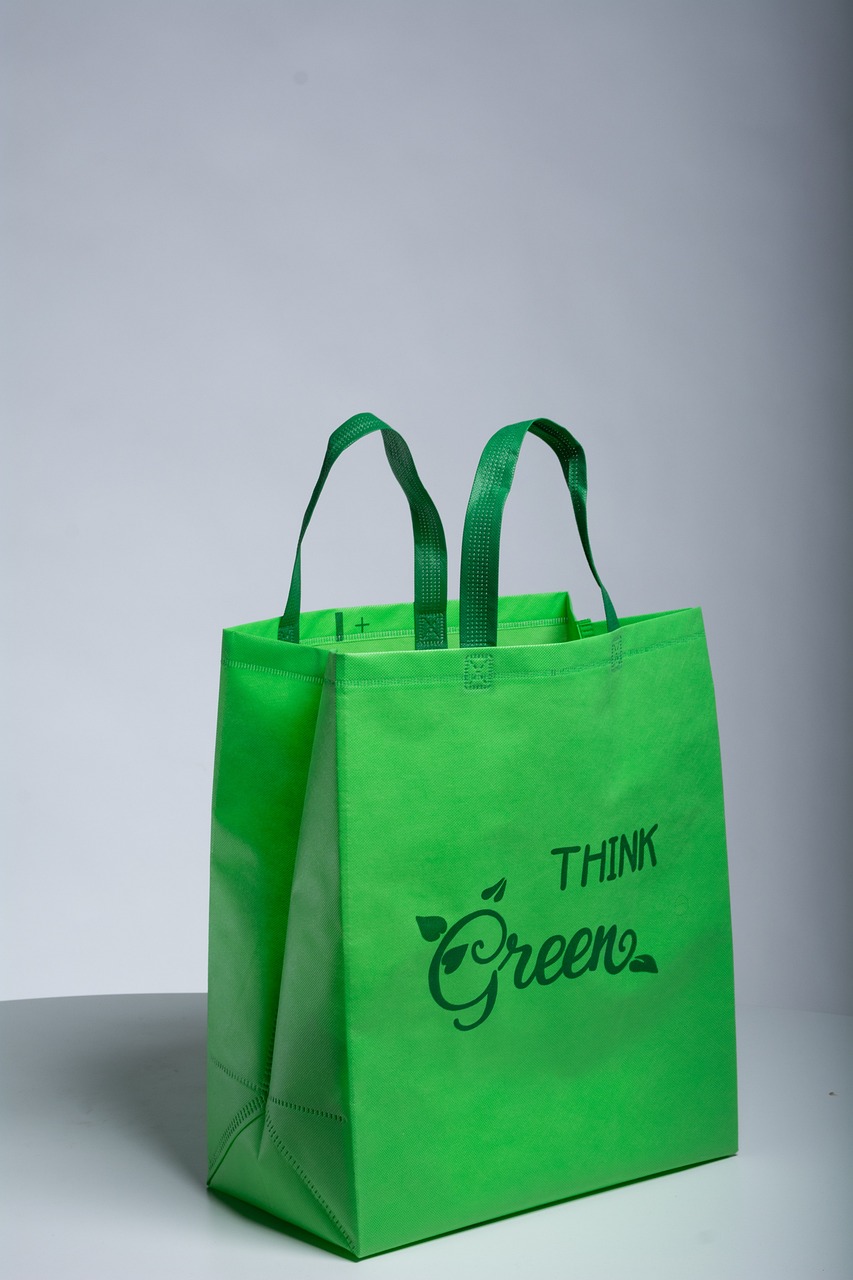
Educating Consumers about the Benefits of Eco-Friendly Packaging
-
Environmental Impact: One of the key aspects of educating consumers is highlighting the environmental impact of single-use plastics. By raising awareness about the harmful effects of plastic waste on ecosystems, wildlife, and human health, consumers can better understand the urgency of adopting eco-friendly packaging alternatives.
-
Resource Conservation: Educating consumers about the importance of resource conservation can be a persuasive factor in promoting sustainable packaging. By highlighting the finite nature of natural resources and the energy-intensive processes involved in plastic production, consumers can appreciate the need for packaging materials that minimize resource consumption.
-
Waste Reduction: Emphasizing the significance of waste reduction is crucial in promoting eco-friendly packaging. Consumers need to understand that their individual choices can make a tangible difference in reducing plastic waste and its associated environmental problems. By showcasing statistics and success stories of waste reduction through sustainable packaging, consumers can be inspired to make more informed decisions.
Encouraging Responsible Purchasing Choices
-
Labeling and Certification: Clear and standardized labeling systems can help consumers identify and choose eco-friendly packaging options. Labels such as “Recyclable,” “Biodegradable,” or “Compostable” provide valuable information about the environmental characteristics of the packaging. Certifications from reputable organizations also serve as a trustworthy guide for consumers seeking sustainable packaging choices.
-
Consumer Empowerment: Empowering consumers to make responsible purchasing choices involves providing them with accessible information and alternatives. Companies and retailers can educate consumers about the availability and benefits of eco-friendly packaging options. This can be done through online platforms, product packaging, and in-store displays that highlight sustainable alternatives.
-
Collaboration and Partnerships: Collaboration between businesses, governments, and environmental organizations plays a significant role in promoting responsible purchasing choices. By working together, stakeholders can develop initiatives that educate and empower consumers to embrace eco-friendly packaging. Partnerships can involve awareness campaigns, incentive programs, and information-sharing platforms.
-
Incentives and Rewards: Offering incentives and rewards to consumers who choose eco-friendly packaging can further encourage responsible purchasing behavior. This can include discounts, loyalty programs, or exclusive access to sustainable product lines. By providing tangible benefits, consumers are more likely to actively seek out and support brands that prioritize eco-friendly packaging.
By educating consumers about the benefits of eco-friendly packaging and encouraging responsible purchasing choices, a shift in consumer behavior can be achieved. Consumer awareness and behavior change are instrumental in driving the demand for sustainable packaging, leading to a broader adoption of alternatives to single-use plastics.
Collaborative Efforts and Government Regulations
In the quest for sustainable packaging solutions and the reduction of single-use plastics, collaborative efforts and government regulations play a vital role. This section will explore the significance of industry collaborations and policy initiatives in driving the transition towards eco-friendly packaging practices.
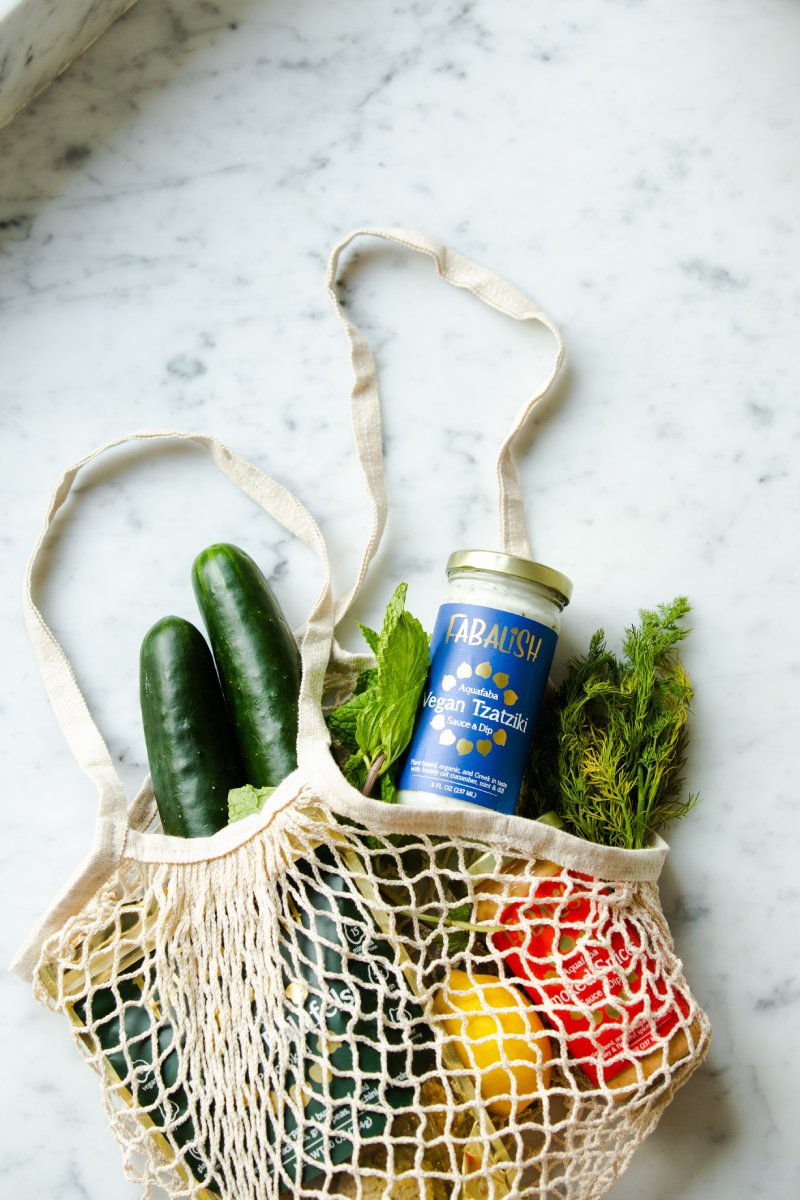
Industry Collaborations to Promote Sustainable Packaging Practices
-
Partnerships for Innovation: Collaboration among industry stakeholders, including manufacturers, retailers, and packaging suppliers, can lead to the development of innovative and sustainable packaging solutions. By sharing knowledge, expertise, and resources, companies can collectively work towards reducing the environmental impact of packaging materials and processes.
-
Collective Impact: Industry collaborations enable collective impact by setting common goals and standards for sustainable packaging. These collaborations can involve the establishment of industry-wide initiatives, platforms, and forums that promote knowledge sharing, best practices, and technological advancements in eco-friendly packaging.
-
Supply Chain Engagement: Collaboration within the supply chain is crucial for implementing sustainable packaging practices. This involves engaging suppliers, distributors, and logistics partners to ensure the efficient and responsible use of packaging materials. By working together, the entire supply chain can contribute to reducing waste, optimizing packaging design, and adopting circular economy principles.
Policy Initiatives and Regulations Addressing Single-Use Plastics
-
Plastic Bans and Restrictions: Governments around the world are implementing regulations to ban or restrict the use of single-use plastics. These policies target items such as plastic bags, straws, and utensils, which are commonly found in the waste stream. By phasing out these items, governments aim to encourage the adoption of reusable or compostable alternatives.
-
Extended Producer Responsibility (EPR): EPR policies place the responsibility on manufacturers and producers to manage the lifecycle of their packaging materials. This includes incentivizing the use of eco-friendly packaging, implementing recycling programs, and contributing to the cost of waste management and recycling infrastructure. EPR policies encourage producers to design packaging that is more sustainable and easier to recycle.
-
Taxation and Levies: Governments are introducing taxes and levies on single-use plastics to discourage their use and promote sustainable alternatives. These economic measures aim to internalize the environmental costs associated with plastic waste and create a financial incentive for businesses and consumers to shift towards eco-friendly packaging options.
-
Public Awareness and Education: Government regulations are often complemented by public awareness campaigns and educational programs. These initiatives aim to inform and educate the public about the environmental impact of single-use plastics and the benefits of sustainable packaging. By raising awareness, governments can foster a culture of responsible consumption and encourage support for eco-friendly initiatives.
Collaborative efforts among industry stakeholders and government regulations are driving the transition towards eco-friendly packaging alternatives. By working together, they can accelerate the adoption of sustainable packaging practices, reduce the reliance on single-use plastics, and create a more environmentally conscious and responsible future.
Conclusion
As the world grapples with the environmental consequences of plastic waste, the rise of eco-friendly packaging offers a glimmer of hope. This section provides a recap of the importance of eco-friendly packaging, a call to action for businesses and individuals, and an emphasis on the potential for a plastic-free future.
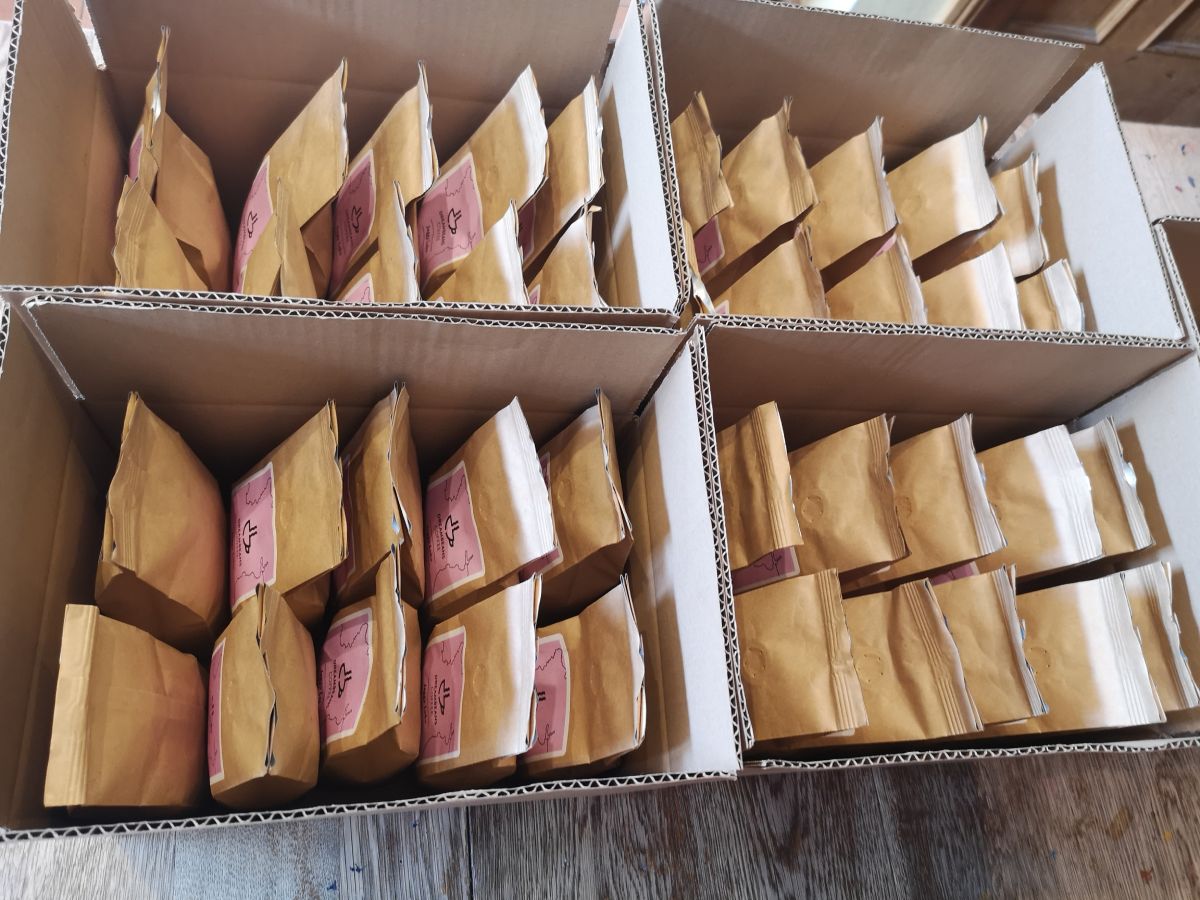
Recap of the Rise of Eco-Friendly Packaging and Its Importance
The rise of eco-friendly packaging represents a significant shift in our approach to packaging materials and waste management. With the detrimental impact of single-use plastics becoming more evident, consumers, businesses, and governments are recognizing the urgent need for sustainable alternatives.
Eco-friendly packaging options encompass a wide range of materials and designs that prioritize environmental responsibility. From biodegradable and compostable materials to recyclable and reusable options, these alternatives aim to minimize the ecological footprint of packaging while maintaining functionality and product integrity.
By adopting eco-friendly packaging, we can address the environmental challenges associated with traditional packaging. The use of sustainable materials reduces dependence on fossil fuels, decreases greenhouse gas emissions, and mitigates the accumulation of plastic waste in our landfills and natural habitats. Additionally, eco-friendly packaging promotes a circular economy model, where materials are reused, recycled, or composted, minimizing resource depletion.
Call to Action for Businesses and Individuals to Embrace Sustainable Packaging Choices
The responsibility to embrace sustainable packaging choices falls upon both businesses and individuals. As businesses, it is crucial to recognize the impact of packaging on the environment and take proactive steps towards eco-friendly alternatives. This includes reevaluating packaging designs, sourcing sustainable materials, optimizing packaging efficiency, and adopting innovative technologies. By incorporating sustainable packaging practices into their operations, businesses can demonstrate their commitment to environmental stewardship, attract eco-conscious consumers, and contribute to a more sustainable future.
On an individual level, we can make a difference through our purchasing decisions and everyday choices. By actively seeking out products with eco-friendly packaging, supporting businesses that prioritize sustainability, and reducing our reliance on single-use plastics, we can drive demand for sustainable options. Small actions like bringing reusable bags, bottles, and containers when shopping, participating in recycling programs, and advocating for responsible packaging practices can collectively have a significant impact on reducing plastic waste and creating a more sustainable world.
Emphasizing the Potential for a Plastic-Free Future
While the journey towards a plastic-free future may seem challenging, it is an aspiration worth pursuing. By embracing eco-friendly packaging alternatives and transitioning away from single-use plastics, we have the potential to reshape the way we consume and package goods.
A plastic-free future offers numerous benefits. It means cleaner oceans, healthier ecosystems, and a reduced burden on our waste management systems. It signifies a shift towards more sustainable production and consumption patterns, where resources are used efficiently, waste is minimized, and natural habitats are protected.
To achieve this vision, collaboration among businesses, governments, and individuals is crucial. It requires innovation, investment in research and development, and a collective commitment to finding and implementing sustainable packaging solutions. By working together, we can create a future where packaging is not a threat to our environment but a catalyst for positive change.
In conclusion, the rise of eco-friendly packaging signals a promising shift towards a more sustainable and responsible approach to packaging. By choosing eco-friendly alternatives, supporting businesses that prioritize sustainability, and advocating for change, we can contribute to a plastic-free future. Let us seize this opportunity to make a lasting impact and pave the way for a greener and more sustainable world.

